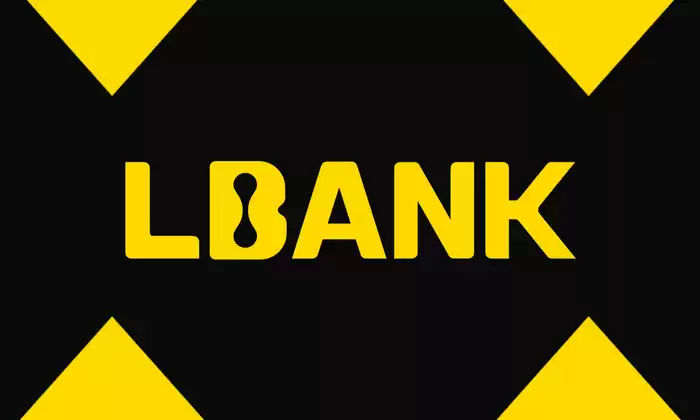-
 Bitcoin
Bitcoin $117600
0.25% -
 Ethereum
Ethereum $4424
0.10% -
 XRP
XRP $3.101
0.50% -
 Tether USDt
Tether USDt $1.001
-0.01% -
 BNB
BNB $836.2
1.26% -
 Solana
Solana $188.8
2.11% -
 USDC
USDC $1.000
0.01% -
 Dogecoin
Dogecoin $0.2301
0.57% -
 TRON
TRON $0.3485
-1.00% -
 Cardano
Cardano $0.9209
-1.34% -
 Hyperliquid
Hyperliquid $46.72
-1.19% -
 Chainlink
Chainlink $22.62
4.84% -
 Stellar
Stellar $0.4275
-0.38% -
 Sui
Sui $3.761
1.91% -
 Bitcoin Cash
Bitcoin Cash $586.7
-0.25% -
 Ethena USDe
Ethena USDe $1.001
0.01% -
 Hedera
Hedera $0.2510
2.06% -
 Avalanche
Avalanche $24.21
2.22% -
 Litecoin
Litecoin $119.7
1.07% -
 Toncoin
Toncoin $3.450
1.06% -
 UNUS SED LEO
UNUS SED LEO $9.411
-0.93% -
 Shiba Inu
Shiba Inu $0.00001298
1.20% -
 Uniswap
Uniswap $10.98
3.25% -
 Polkadot
Polkadot $3.961
2.16% -
 Dai
Dai $1.000
0.00% -
 Bitget Token
Bitget Token $4.642
0.95% -
 Cronos
Cronos $0.1514
0.57% -
 Ethena
Ethena $0.7290
3.78% -
 Monero
Monero $254.1
7.69% -
 Pepe
Pepe $0.00001102
2.47%
How to read LBank contract K line
Understanding Contract K-line and using technical indicators, such as Moving Averages and Relative Strength Index, enables traders to identify market trends and potential trading opportunities.
Nov 30, 2024 at 01:50 pm

How to Analyze LBank Contract K-line
1. Understanding Contract K-line
- What is Contract K-line?
Contract K-line is a graphical representation of the price movements of a futures contract over time. It consists of a series of candlesticks, each representing a specific time interval (e.g., 5 minutes, 1 hour, 1 day).
- Interpreting Candlesticks:
Each candlestick has four key components:
- Open: Opening price for the given time interval
- Close: Closing price for the given time interval
- High: Highest price within the given time interval
- Low: Lowest price within the given time interval
Candlesticks with a filled (solid) body indicate that the closing price was higher than the opening price (bullish trend), while those with a hollow (empty) body indicate that the closing price was lower than the opening price (bearish trend). Shadows (wicks) extending above or below the body represent the highest and lowest prices reached during the interval.
2. Identifying Market Trends
- Upward Trends:
Sustained series of higher lows and higher highs on the K-line indicate an upward trend. Look for bullish candlesticks with increasing body sizes and small or no shadows.
- Downward Trends:
Sustained series of lower highs and lower lows indicate a downward trend. Look for bearish candlesticks with large body sizes and long shadows.
- Sideways Trends (Ranging Markets):
Lack of clear direction with frequent movement within a defined range. Candlesticks fluctuate without forming consistent patterns.
3. Using Technical Indicators
- Moving Averages (MA):
A line representing the average price over a specified number of periods. MAs help identify trends and potential support and resistance levels.
- Relative Strength Index (RSI):
Measures the momentum of price movements. RSI values above 70 may indicate an overbought condition, while values below 30 may indicate an oversold condition.
- Bollinger Bands:
Provide a range of volatility estimated using the average price and standard deviation. Breakouts above (or below) the bands may signal potential trend reversals.
4. Analyzing Volume
- Volume Bars:
Histograms representing the trading volume for each time interval. High volume on upward or downward movements can indicate strong conviction and significant market activity.
- Volume Weighted Average Price (VWAP):
Calculates the average price based on volume, indicating the price at which most of the trading activity occurred. Support and resistance levels often form around VWAP.
5. Combining Indicators and Analysis
- Confirming Trends:
Use multiple technical indicators to confirm the direction of the trend. For example, a combination of bullish candlesticks, upward-sloping MAs, and increasing volume suggests a strong upward trend.
- Identifying Potential Reversals:
Look for divergences between price and indicators. For example, a downward-trending K-line with upward-moving RSI may indicate a potential reversal.
- Determining Support and Resistance:
Identify areas where price has consistently reversed or found resistance. These levels can serve as potential entry and exit points for trades.
Disclaimer:info@kdj.com
The information provided is not trading advice. kdj.com does not assume any responsibility for any investments made based on the information provided in this article. Cryptocurrencies are highly volatile and it is highly recommended that you invest with caution after thorough research!
If you believe that the content used on this website infringes your copyright, please contact us immediately (info@kdj.com) and we will delete it promptly.
- Kazakhstan's Crypto Leap: Bitcoin ETF and Central Asia's Digital Finance Future
- 2025-08-13 12:45:19
- BlockDAG Presale Blazes Past $371M: Fundraising Frenzy Fuels Crypto Sensation
- 2025-08-13 13:05:21
- Meme Coins: Chasing the 2025 Surge – Which Will Moonshot?
- 2025-08-13 10:25:23
- Bitcoin's Wild Ride: Rally, Pullback, and What's Next
- 2025-08-13 10:25:23
- Bitcoin, Bitmax, and Institutional Demand: A New Era of Crypto Investment
- 2025-08-13 10:45:12
- Solana, ROAM, and Airdrops: What's the Buzz in 2025?
- 2025-08-13 11:35:13
Related knowledge

Is it possible to adjust the leverage on an open position on KuCoin?
Aug 09,2025 at 08:21pm
Understanding Leverage in KuCoin Futures TradingLeverage in KuCoin Futures allows traders to amplify their exposure to price movements by borrowing fu...

What cryptocurrencies are supported as collateral on KuCoin Futures?
Aug 11,2025 at 04:21am
Overview of KuCoin Futures and Collateral MechanismKuCoin Futures is a derivatives trading platform that allows users to trade perpetual and delivery ...

What is the difference between realized and unrealized PNL on KuCoin?
Aug 09,2025 at 01:49am
Understanding Realized and Unrealized PNL on KuCoinWhen trading on KuCoin, especially in futures and perpetual contracts, understanding the distinctio...

What different order types are available to use on KuCoin Futures?
Aug 13,2025 at 11:35am
Understanding Order Types on KuCoin FuturesKuCoin Futures offers a comprehensive range of order types to accommodate different trading strategies and ...

How does KuCoin Futures compare against Binance Futures in terms of features?
Aug 09,2025 at 03:22am
Trading Interface and User ExperienceThe trading interface is a critical component when comparing KuCoin Futures and Binance Futures, as it directly i...

How can I manage risk when applying high leverage on KuCoin?
Aug 13,2025 at 11:35am
Understanding High Leverage and Its Implications on KuCoinHigh leverage in cryptocurrency trading allows users to control larger positions with a rela...

Is it possible to adjust the leverage on an open position on KuCoin?
Aug 09,2025 at 08:21pm
Understanding Leverage in KuCoin Futures TradingLeverage in KuCoin Futures allows traders to amplify their exposure to price movements by borrowing fu...

What cryptocurrencies are supported as collateral on KuCoin Futures?
Aug 11,2025 at 04:21am
Overview of KuCoin Futures and Collateral MechanismKuCoin Futures is a derivatives trading platform that allows users to trade perpetual and delivery ...

What is the difference between realized and unrealized PNL on KuCoin?
Aug 09,2025 at 01:49am
Understanding Realized and Unrealized PNL on KuCoinWhen trading on KuCoin, especially in futures and perpetual contracts, understanding the distinctio...

What different order types are available to use on KuCoin Futures?
Aug 13,2025 at 11:35am
Understanding Order Types on KuCoin FuturesKuCoin Futures offers a comprehensive range of order types to accommodate different trading strategies and ...

How does KuCoin Futures compare against Binance Futures in terms of features?
Aug 09,2025 at 03:22am
Trading Interface and User ExperienceThe trading interface is a critical component when comparing KuCoin Futures and Binance Futures, as it directly i...

How can I manage risk when applying high leverage on KuCoin?
Aug 13,2025 at 11:35am
Understanding High Leverage and Its Implications on KuCoinHigh leverage in cryptocurrency trading allows users to control larger positions with a rela...
See all articles

























































































